New Details of "Field Modernization"/Spectrum Enforcement Cutback
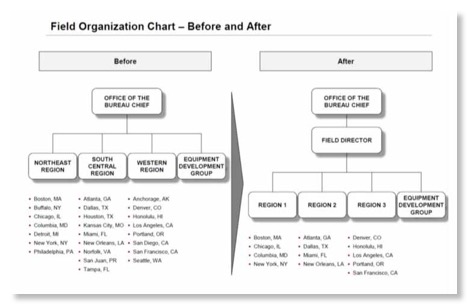
This week FCC notified its union, pursuant for federal labor relations laws, of the details of last week's "Field Modernization". We have posted the key documents for readers to review.
Some observations:
- Number of people affected: The present staffing level is 98 and the new one is 54 for a net loss of 44 positions. The 98 number includes no vacancies so this is a loss of 44 FCC employees, most of whom are long time employees.
- Three "bargaining unit" staffers will be downgraded/demoted from GS-14 to GS-13: 2 in Miami and 1 in LA. "Save pay" provisions will limit the salary impact but the salary impact will be real and negative for these 3 individuals.
- A few supervisors will also be downgraded/demoted but the details were not part of the notification to the union and are more difficult to deduce at this point.
- A new GS-15 Enforcement Bureau Field Director office is created with a GS-15 EE as "Field Director" and 3 lawyers as ""Field Counsel". Two of these lawyers are named and do not presently work in DC so it is unclear where these positions will be. The Field Director will be an awfully lonely position if his/her nearest colleagues are in Columbia MD.
- The Equipment Development Group in Powder Springs, GA shrinks from 10 positions to 7. This is the part of EB that develops new equipment and built special equipment. In the long term with a decrease in overall staff and number of offices there may be less equipment to build. But the only way to increase the productivity of field staff is to give them the right equipment to make them more productive as the consultant's report says. Various statements have been made about keep some of the savings from the staff cuts within the field to buy equipment, but the downsizing of EDG raises the question of whether this is credible.
- Equipment acquisition in EB (as well as in OET) has always been limited by the late availability of funds every fiscal year and excessive procurement bureaucracy. As a result usually only off-the-shelf equipment is bought, usually "riding" a DoD contract so the model options are limited. In order to get specialized equipment more procurement flexibility is needed and that generally means earlier availability of funding something that does not appear to be of interest at present to the FCC's Managing Director.
- t is unclear if FCC will pay relocation costs of any of the 44+ employees who are affected by these changes who qualifies for a position elsewhere in FCC. FCC since the Reagan era FCC has not budgeted for staff relocations even though it has staff "outside the Beltway". Indeed, former Managing Director Minkel (1980s) would cancel personnel postings if the person selected was legally entitled to relocation at FCC expense! Great way to help morale!

- Despite the promises to NAB to increase suppression of pirate radio stations there is not evidence this will happen or be sustainable. Pirates are generally not limited to the usual 40 hour work week and suppression needs availability of both overtime funding and travel funding - for those not conveniently near any of the remaining offices. In addition, since the creation of PSHSB aft 9/11 the entire 24/7 operation of FCC moved from EB to PSHSB and is only interested in off hour contacts dealing with safety-related issues not pirate broadcasters. Who you gonna call on weekend/evenings about a private station? Ghost Busters?
"Field Office Modernization" OR Spectrum Enforcement Cutback
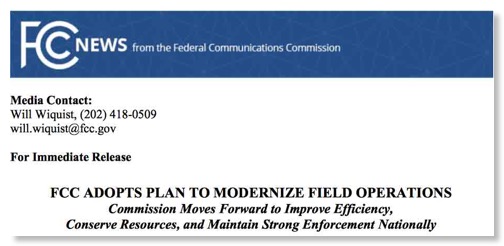
Yesterday FCC at a public commission meeting voted unanimously to
"modernize the agency’s field operations within the Enforcement Bureau. The proposal will improve efficiency, better position the agency to do effective radio interference detection and resolution and meet other enforcement needs, and save millions of dollars annually after implementation is complete."
The decision was in an Order that was adopted and released immediately. The Order states
The Field will embark on a program to update its equipment and employee skillset to address the likely issues that will accompany new and expanded uses of spectrum. This program will include the expanded use of remotely operated monitoring equipment to supplement field staff, as well as the identification and use of portable devices capable of assessing interference issues in bands expected to experience heavy spectrum use. Upon completion of all required implementation steps, the Commission will first apply the net savings resulting from this reorganization effort to this program, before applying those monies to the agency’s general fund. The net savings will not be used to increase the number of full-time non-field-related employees in the headquarters office of the Enforcement Bureau.
Now recall that TR Daily previously reported "FCC officials also have told stakeholders that the field operations would get the first shot at any money the FCC saves by closing field offices." So where are the savings going? Will there really be enough money after all these jobs are eliminated "to update its equipment and employee skillset"? While a statement has been made that savings can not be used to increase EB front office bureaucrats - comments were made at the commission meeting that EB front office bureaucrats have actually have increased significantly in the past few years - there is now little assurance it will actually go to equipment and training.
Paragraph 15 of the Order states "IT IS FURTHER ORDERED THAT all Enforcement Bureau field agents shall have electrical engineering backgrounds." Your blogger was educated and overeducated in electrical engineering. He has actually worked in spectrum enforcement. Focusing on academic credentials for such work is naive. Perhaps the intent was not to have non techies, but the skill set for solving spectrum enforcement problems in the field has little to do with most EE curriculums these days. Yes, some universities such as Virginia Tech, UCSD, NYU (now merged with "Brooklyn Poly"), and University of Texas-Austin have programs in wireless technology, but the vast majority of EE graduates have virtually no exposure to wireless technology, focusing on issues such as software engineering and semiconductor design and manufacturing. This coupled with the totally inept technical staff recruiting FCC has had for the past decade means less capability in new hires, not more. For spectrum enforcement, you need people who really understand spectrum issues intuitively. Let us go back to the MGM-produced WWII era film "Patrolling the Ether". When FCC wanted good agent then it hired ham radio operators. While having a ham license is not a perfect predictor of success, it is a better predictor of success than simply having an EE degree given the state of EE education in wireless issues now. One has to hire good people, not take short cuts in focusing on credentials!
For the past 3 decades, ever since Ed Minkel became the first Managing Director, FCC has avoided paying for personnel relocations. Will FCC pay for relocations related to this downsizing? For example, will staffers whose jobs are eliminated be eligible for FCC paid relocation to another office with a vacancy or to Washington if they are selected for a job there? We believe that the near total absence of FCC-funded relocations were both a major contributor to poor morale in field offices and has denied FCC headquarters of the historic flow of individuals with field experience and actual problems of licensees. The 2016 FCC Budget has only $55k for Budget Object Classification Codes 22, "Transportation of Things" and there is no indication of any budget for the subcategory "2210 Change of Official Station".
Finally a word to the GPS, aviation, and consumer electronics industries: Your trade associations, GPS Innovation Alliance, AOPA "Protecting your freedom to fly", Airlines for America, and Consumer Electronics Association were totally silent during the several month public debate on this downsizing that even under the best of circumstances will result in a lot fewer "boots on the ground". The broadcast industry, cellular industry, and public safety interests spoke up loudly during the deliberations on "modernization"/downsizing and as a result they got specific assurances that their interests would be attended to. Your industries were totally silent. Therefore do not be surprised to see the outcome of less spectrum enforcement on your industries may be much more severe than on those who spoke up!
- GPS: The GPDS industry is very susceptible to jamming sometimes called "privacy protection devices". FCC has the legal authority to both stop jamming and to stop the marketing of jamming devices. Will have the number of field agents and have the number of field office improve their capability?
- Aviation interests: The report that started this downsizing clearly stated that since FCC-enforced antenna marking and lighting issues have high compliance now less enforcement is needed. Fortunately aviation collisions into towers that are poorly marked, poorly lighted, or reported in incorrect locations are rare, but you know what the consequences of such collisions are! A lot of tower owners will know they are hundreds of miles away from the nearest FCC office and that the likelihood of marking and lighting enforcement has just decreased markedly. So why hire a tower caliber to replace that bulb? Fly carefully now!
- Consumer Electronics: FCC Rules serve to both limit interference and to create a "level playing field" for firms competing in the manufacture and sale of consumer electronics. In the consultant's report that lead to this downsizing, equipment marketing enforcement was never mentioned. So don't expect much in the future!
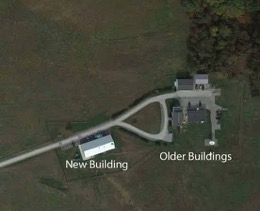
The "Duplexer Gap" Issue Has Nothing to do With the Future of Local TV News!
National Association of Broadcasters, Radio & Television Digital News Association, Microsoft Corporation, Utilities Telecom Council, Wireless Internet Service Providers Association (WISPA), Engine Advocacy, Spectrum Bridge, Consumers Union, Consumer Federation of America, Open Technology Institute at New America, Public Knowledge, Free Press, Common Cause, Benton Foundation, Rural Broadband Policy Group, Institute for Local Self-Reliance, Access Humboldt, and Akaku Maui Community Media.
Kudos to those who were able to bring such a coalition together on any issue! We do not necessarily disagree with the bottom line of the letter with respect to preserving the duplex gap for unlicensed and wireless mic use, but we want to make clear:
Future of Local TV News Does Not Depend on Duplex Gap Spectrum!
The letter has several statements on this issue:
- “Placing television stations in the duplex gap …would significantly undercut the public interest benefits associated with the auction ..r by preventing both mobile news reporting and deployment of low-band unlicensed spectrum in the places where low-band spectrum is most needed to effectively provide these services.” p. 1
- “…eliminating reserved spectrum for wireless microphones could leave newsgathering operations without necessary spectrum to cover breaking news.” p. 1
- “…preserving critical news reporting” - p. 2
- “The proposal would hamper reporting of breaking news in the most populous cities.” - p. 2
The above statements only make sense with respect to using the wireless microphones that are presently owned by TV stations. TV stations sell for prices in the order of millions of dollars. The value of their wireless mic equipment inventory is a negligible fraction of their net worth. While it is true that alternative spectrum wireless mics are not available in the US today, the main reason is the basic truism:
Free spectrum is always cheaper than any new technology!
And the wireless mic spectrum referred to in the letter is FREE spectrum using outdated technology!
Today’s Wireless Mic Spectrum is Both a Technological and Policy Anachronism
Maj. Armstrong - Inventor of FM
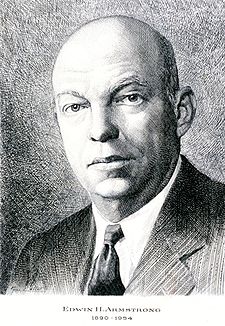
The irony is that even with the duplex gap available, in major cities theatrical productions, concerts and major sporting events will be hard put to use traditional wireless mic technology because of the near or complete elimination of virtual channels.
Since 1995 commercial spectrum users, e.g. broadcasters, have generally been expected to pay for spectrum use. Note that the PTC-related rail accident in Philadelphia highlighted the fact that Congress ordered he railroad industry to implement spectrum-based PTC but told them to buy spectrum access for existing licensees. Why do broadcasters feel they are entitled permanently to free spectrum access for wireless mics?
Is there a technological option? Yes at least one and certainly many others. But FCC's focus at throwing more spectrum at the problem removes any incentive for private capital formation for more efficient technology. Qualcomm developed several years ago a technology called FlashLinq for peer-to-peer communications in cellular spectrum under the control of cellular carriers similar tpthat way they control femtocells. This technology would allow cellular carriers to sell access to inevitable "white space" in their service areas that can only be used for lower power short range communications. Why is the product dead or dormant? Neither wireless mic users nor cellular carriers want anything to do with it! Wireless mic users are addicted to free spectrum and obsolescent technologies. Cellular carriers are addicted to the "killer app" mentality where they don't want a new service or revenue stream unless it is huge. Cellular operators can't fathom that eliminating other spectrum using by converting them to customers rather than fellow spectrum lustors might actually help their long range goals.
Today's smartphones are basically 2 way communications systems capable of sending and receiving 100s of kilobits or more of data. While your standard iPhone offers neither broadcast quality audio not easy access for sending high speed data from an external source, it is not rocket science to modify the interface to permits external high quality microphones with analog/digital convertors to interface with such a smartphone so the on the screen newsperson gets his/her audio out that way, not via Part 74 spectrum.
Other technical option are possible, but who would develop them given the present wireless mic policy impasse at FCC?
The issue of spectrum for concerts and theater is more complex technically because of both high quality audio requirements and requirements for minimum delay (less than 10 ms.). But again this does not seem impossible if FCC stops throwing spectrum at users with outdated technology who don't want to pay for spectrum.
So there may be reasons for keeping the "duplex gap", but the future of local news isn't one of them.
FCC Approves MSS Part 5 Reconsideration Request
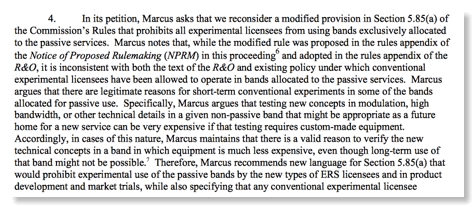
On July 8 FCC released an MO&O&FNPRM in Docket 10-236, formally captioned “Promoting Expanded Opportunities for Radio Experimentation and Market Trials under Part 5 of the Commission's Rules and Streamlining Other Related Rules”. This decision deals with 3 reconsideration requests, one of which was filed by your blogger. They relate to the January 31, 2013 FCC decision to revise the experimental licensing rules. In that decision the new rules forbid for the first time all experimental licenses in bands with only passive allocations. While this language had been in the NPRM’s draft rules, it was never mentioned in either the discussion sections of the NPRM or the R&O and quite probably was a drafting error.
We got involved in this issue after signing a new client in May 2013 who was having problems getting experimental licenses for millimeterwave technology experiments. In researching the issue, we noticed that the new rules were about to go into effect that would have made the task nearly impossible due to a new prohibition on any experiment in any passive only band regardless of its impact on passive spectrum users. Having noticed this 2 days before the reconsideration filing deadline, it was not possible to convince the new client to both file and approve the drafting so as a public service we did it pro se and filed our own Petition for Reconsideration. We subsequently got supporting comments from both Boeing and Battelle Memorial Institute. No party opposed this issue.
The Commission apparently agreed with our logic stating
“As Marcus observes, Section 5.85(a) of the rules appendix in the R&O is inconsistent with both our existing treatment of conventional ERS licenses and the text of the R&O. This inconsistency arose in the NPRM, where the text proposed that only program licenses would be prohibited from using “restricted” bands (including passive service bands) listed in Section 15.205(a) of the Commission’s Rules. In contrast, Section 5.85(a) of the rules appendix proposed that all experimental use of “any frequency or frequency band exclusively allocated to the passive services” be prohibited. This inconsistency was not addressed by any commenting party, but the Commission’s stated intent in the text of the R&O was to continue previous practice regarding conventional ERS licenses.”
The new rules have the following reasonable safeguards to minimize unnecessary emissions in the passive bands:
§ 5.85 Frequencies and policy governing their assignment.
(a)(1) Stations operating in the Experimental Radio Service may be authorized to use any Federal or non-Federal frequency designated in the Table of Frequency Allocations set forth in part 2 of this chapter, provided that the need for the frequency requested is fully justified by the applicant. Stations authorized under Subparts E and F are subject to additional restrictions.
(2) Applications to use any frequency or frequency band exclusively allocated to the passive services (including the radio astronomy service) must include an explicit justification of why nearby bands that have non-passive allocations are not adequate for the experiment. Such applications must also state that the applicant acknowledges that long term or multiple location use of passive bands is not possible and that the applicant intends to transition any long-term use to a band with appropriate allocations.” (These last two sentences are a minor modification of our proposed wording on p. 14 of our Petition.)
When Docket 10-236 was initiated the Commission boldly stated
“The Federal Communications Commission today launched two proceedings that will help to promote investment and create jobs in developing innovative spectrum-efficient technologies and services to help meet the growing demand for wireless broadband services. The first action is a Notice of Proposed Rulemaking that seeks to expand the FCCÆs existing Experimental Radio Service rules to promote cutting-edge research and foster development of new wireless technologies, devices, and applications.”
Chairman Genachowski went on to state:
“With these two items, we build on our efforts to use spectrum more efficiently and in ways that deliver the highest value for the American people, and to encourage groundbreaking innovation….The goal is to accelerate innovation – to reduce the time for an idea to get from the lab to the market. A more extensive experimental licensing program would also help the FCC make smarter, faster decisions, by giving us on-the-ground intelligence on interference issues, and insight into the development of new cutting edge technologies. Encouraging research and development is vital to our objective of making the U.S. the spawning ground for the great technological advances of tomorrow. Past advances in technology, such as cellular networks and improvements in digital transmission techniques have led to vastly improved efficiency in spectrum use.”
While no one could disagree with these goals, this proceeding — like many other spectrum policy issues that are not the focus of large trade associations — is limping along on a very low priority and in the FCC as presently funded and operating that means things are getting done very slowly. Note that the revised rules in the R&O only went into effect 5 months after the adoption and release of the R&O, no doubt due to “back office problems” due to short staffing in the unglamorous parts of FCC where “there rubber hits the road”. Note also that while this docket adopted the new program license category for experiments, these are not yet available due to delays in getting funding within FCC to update the website for applications and then more back office problems with OMB approval of information requests.
Finally, note that this reconsideration under was related a little more than 2 years after the filing of reconsideration requests. This type of delay is typical for all spectrum items not related to incentive auction issues. (Note that the delays dealing with Docket 10-4 and the FM/LTE problem show that even the cellular industry can not get timely attention on non-incentive auction issues!) We note that some commissioners think there is currently too much delegated authority to FCC staff. Look at the new decisions and think about whether any of these issues needed or gained value from deliberations from 5 presidential appointees confirmed by the Senate?
In the coming months a major issue in this blog will be improving FCC spectrum policy productivity to keep up with the dynamic requirements of the spectrum-related industries and to help US competitiveness. We believe that productivity can be improved without new legislation, although new funding may be needed. (FCC costs are matched by user fees so new funding would not involve new tax dollars.)
UPDATE
Discussion of same decision from our friends at CommLawBlog.



![Validate my RSS feed [Valid RSS]](valid-rss-rogers.png)

